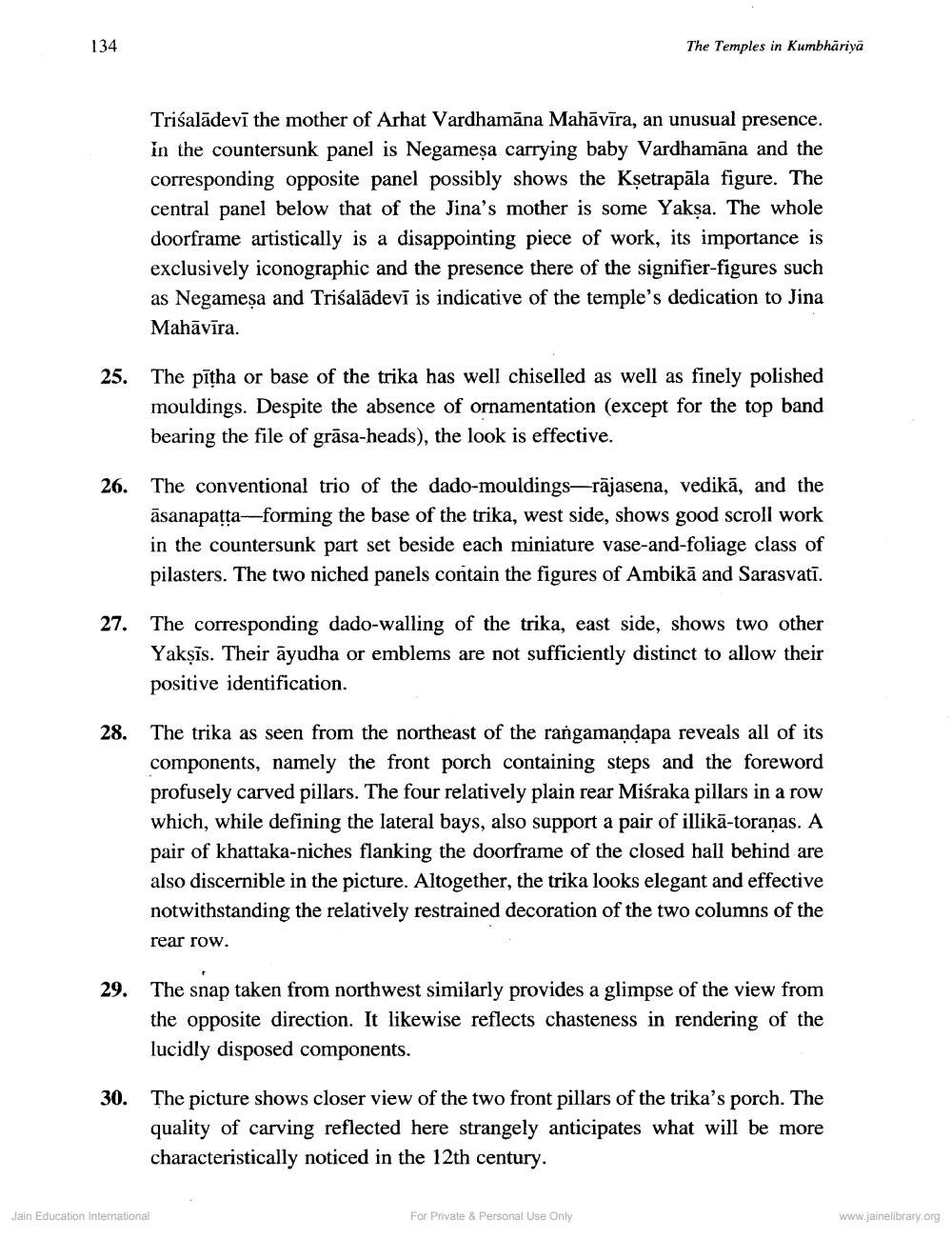________________
134
The Temples in Kumbhariya
Trisalādevī the mother of Arhat Vardhamana Mahāvīra, an unusual presence. in the countersunk panel is Negameșa carrying baby Vardhamāna and the corresponding opposite panel possibly shows the Kșetrapāla figure. The central panel below that of the Jina's mother is some Yaksa. The whole doorframe artistically is a disappointing piece of work, its importance is exclusively iconographic and the presence there of the signifier-figures such as Negamesa and Trisalādevī is indicative of the temple's dedication to Jina Mahāvīra.
25.
The pītha or base of the trika has well chiselled as well as finely polished mouldings. Despite the absence of ornamentation (except for the top band bearing the file of grāsa-heads), the look is effective.
26.
The conventional trio of the dado-mouldings—rājasena, vedikā, and the āsanapatta-forming the base of the trika, west side, shows good scroll work in the countersunk part set beside each miniature vase-and-foliage class of pilasters. The two niched panels contain the figures of Ambikā and Sarasvatī.
27.
The corresponding dado-walling of the trika, east side, shows two other Yakṣīs. Their āyudha or emblems are not sufficiently distinct to allow their positive identification.
28.
The trika as seen from the northeast of the rangamandapa reveals all of its components, namely the front porch containing steps and the foreword profusely carved pillars. The four relatively plain rear Miśraka pillars in a row which, while defining the lateral bays, also support a pair of illikā-toranas. A pair of khattaka-niches flanking the doorframe of the closed hall behind are also discernible in the picture. Altogether, the trika looks elegant and effective notwithstanding the relatively restrained decoration of the two columns of the rear row.
29.
The snap taken from northwest similarly provides a glimpse of the view from the opposite direction. It likewise reflects chasteness in rendering of the lucidly disposed components.
30.
The picture shows closer view of the two front pillars of the trika's porch. The quality of carving reflected here strangely anticipates what will be more characteristically noticed in the 12th century.
Jain Education International
For Private & Personal Use Only
www.jainelibrary.org




